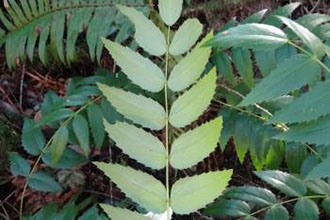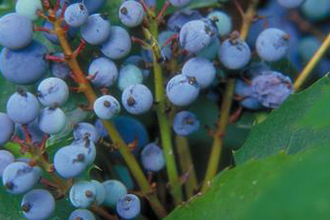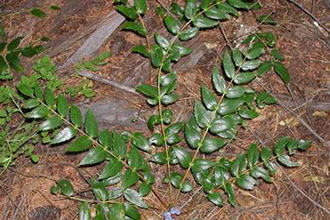Taxonomy: Kingdom - Plantae (plants). Subkingdom - Tracheobionta (vascular plants). Superdivision - Spermatophyta (seed plants). Division - Magnoliophyta (Flowering plants). Class - Magnoliopsida (Dicotyledons). Subclass - Magnoliidae. Order - Ranunculales. Family - Berberidaceae (Barberry familly). Genus -Berberis. Species - Berberis aquifolium Pursh. - Oregon-grape.
Habitat: Also known as holly-leaf Oregon-grape, shinning Oregon-grape and tall Oregon-grape, this shurub is widely distributed throughout Washington; southern British Columbia south to Northern California, east to northern Idaho and western Montana. It is typically found on sagebrush slopes and in open woods.



